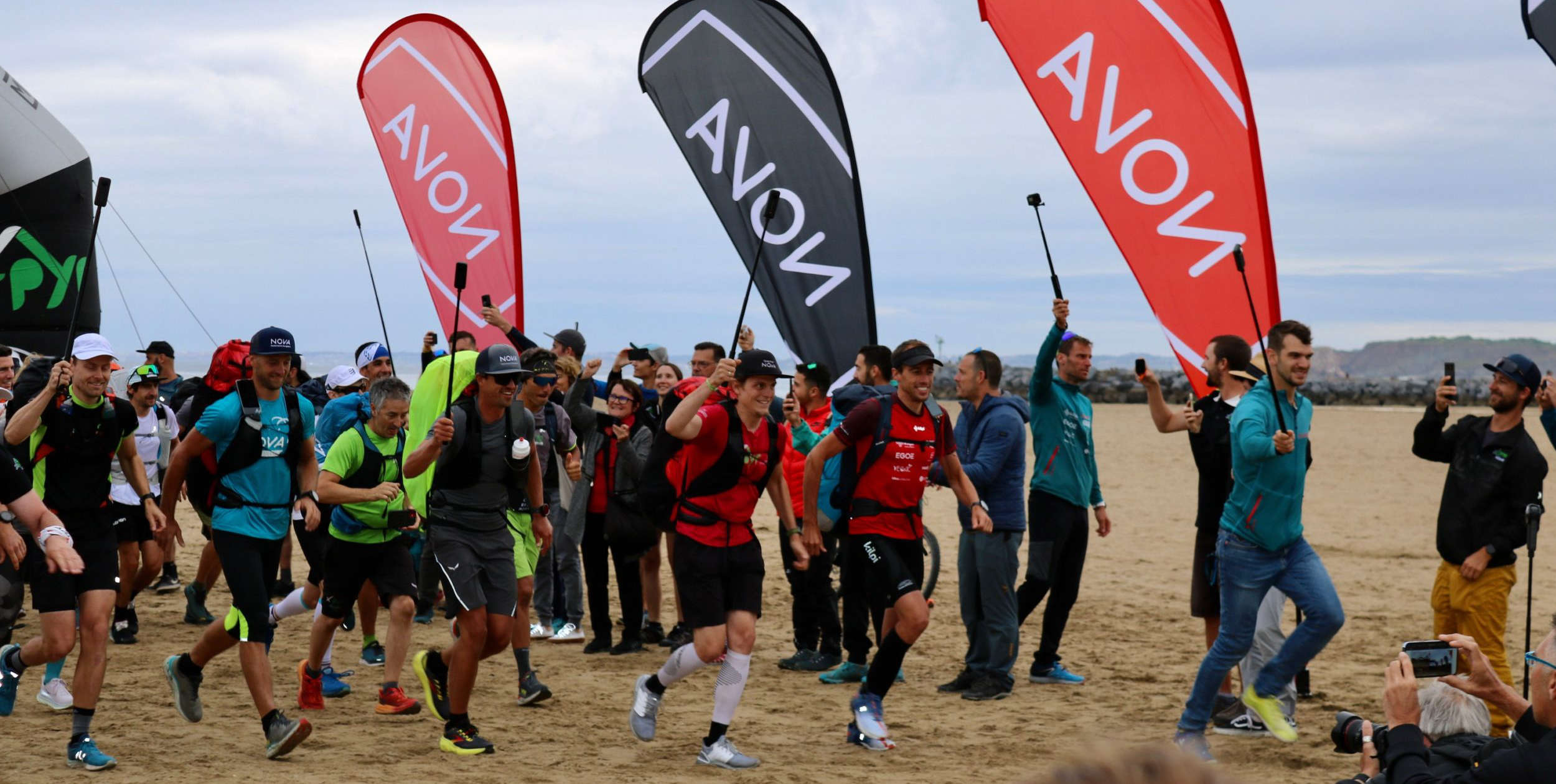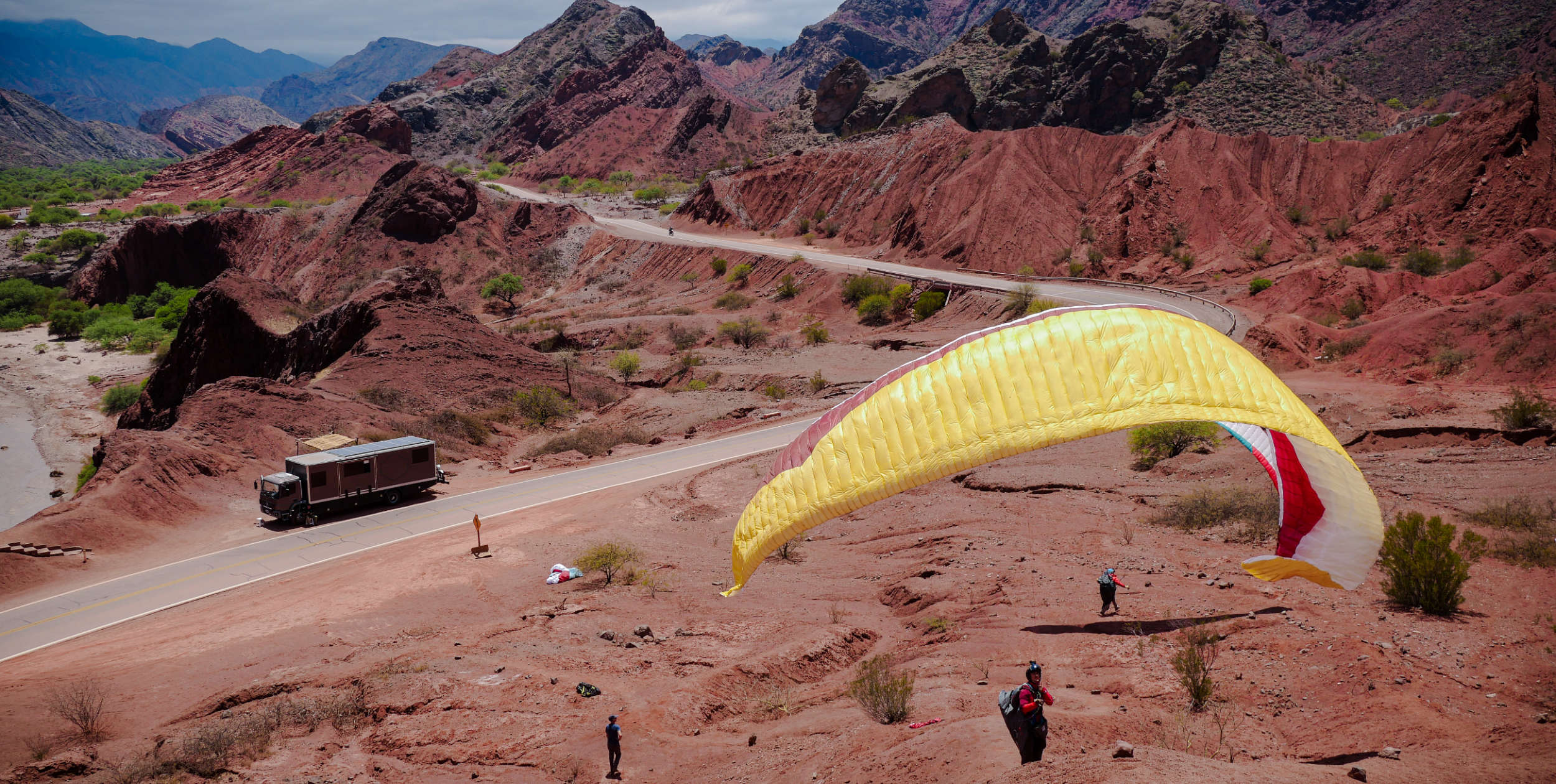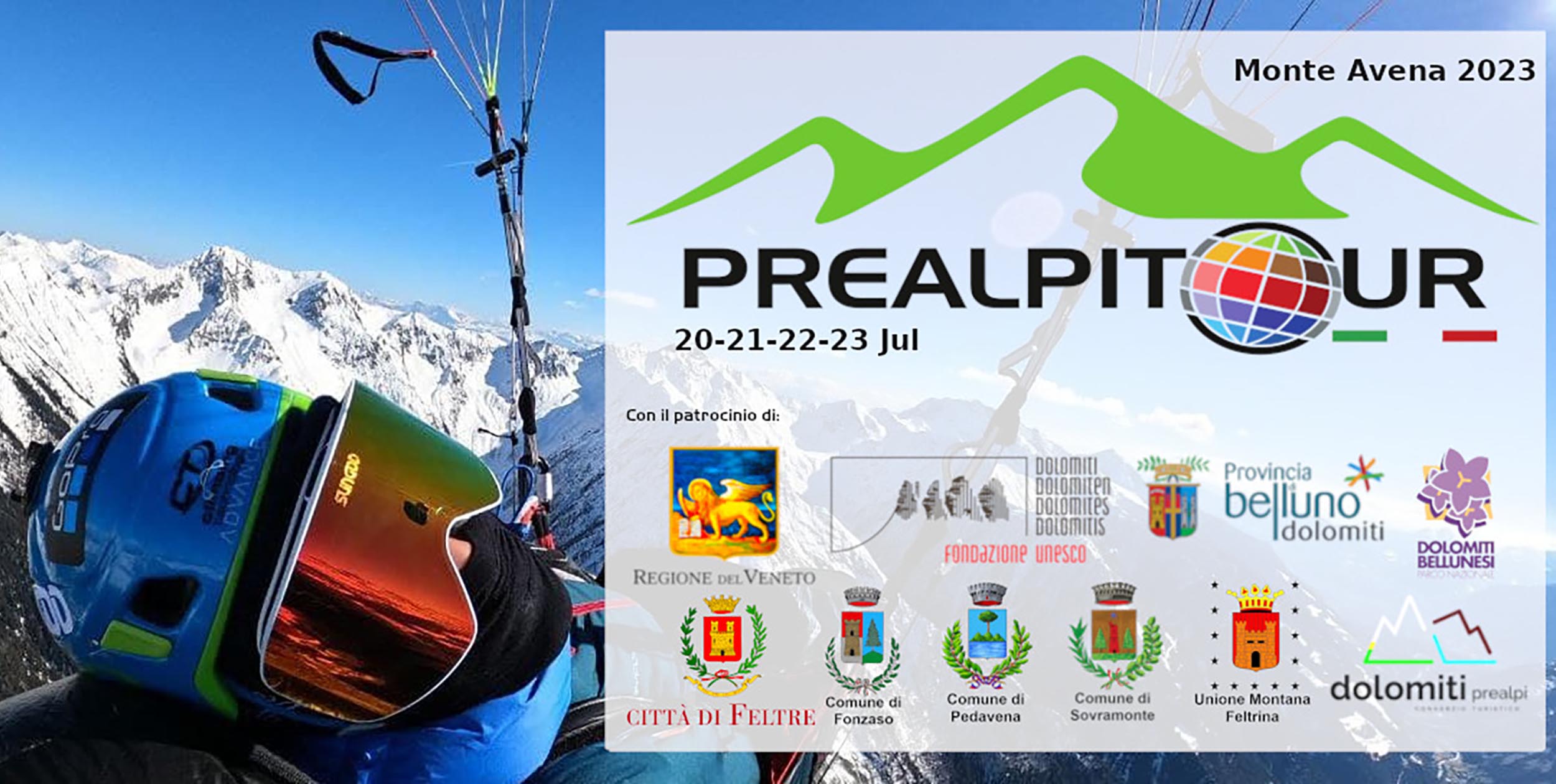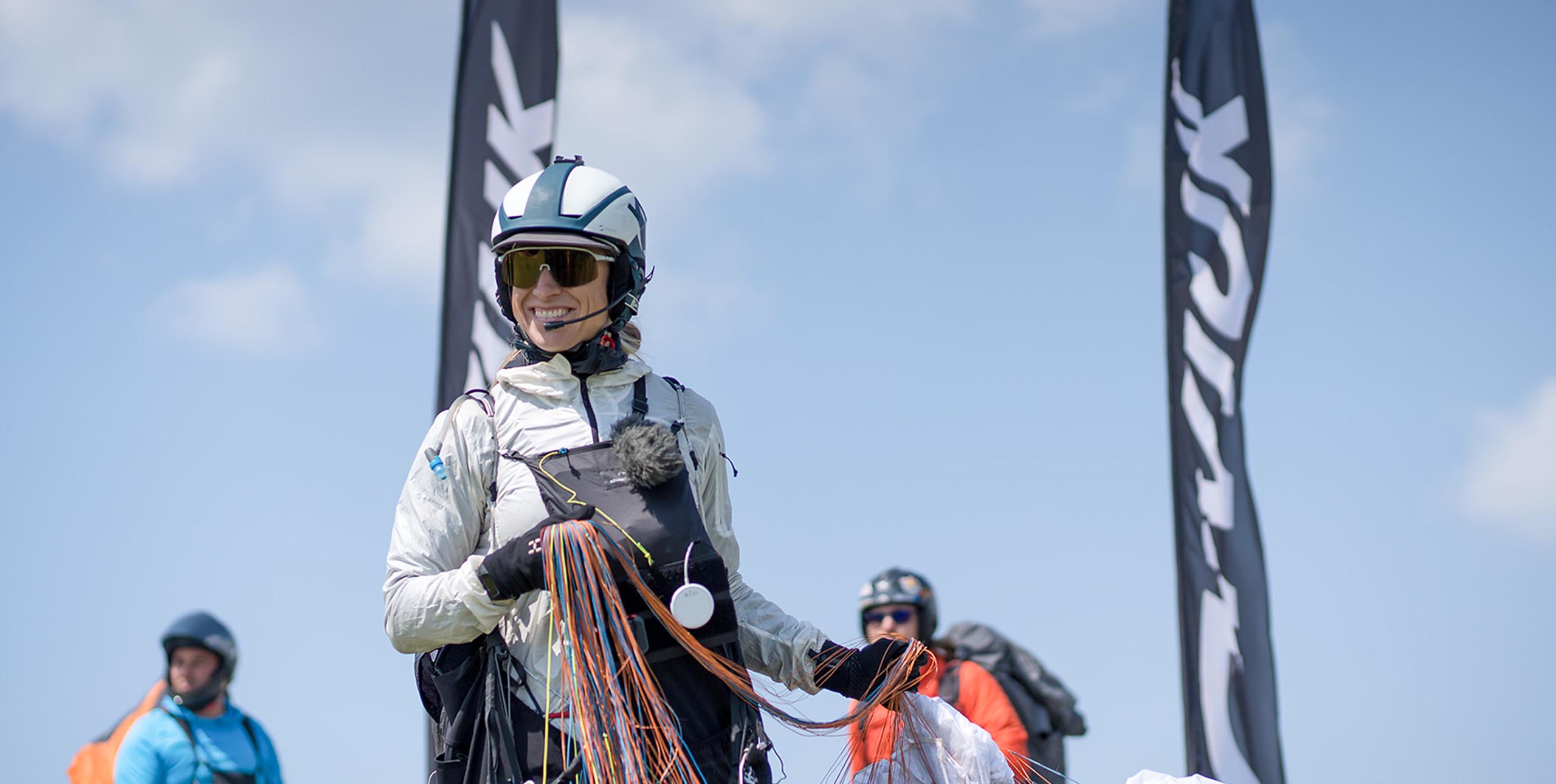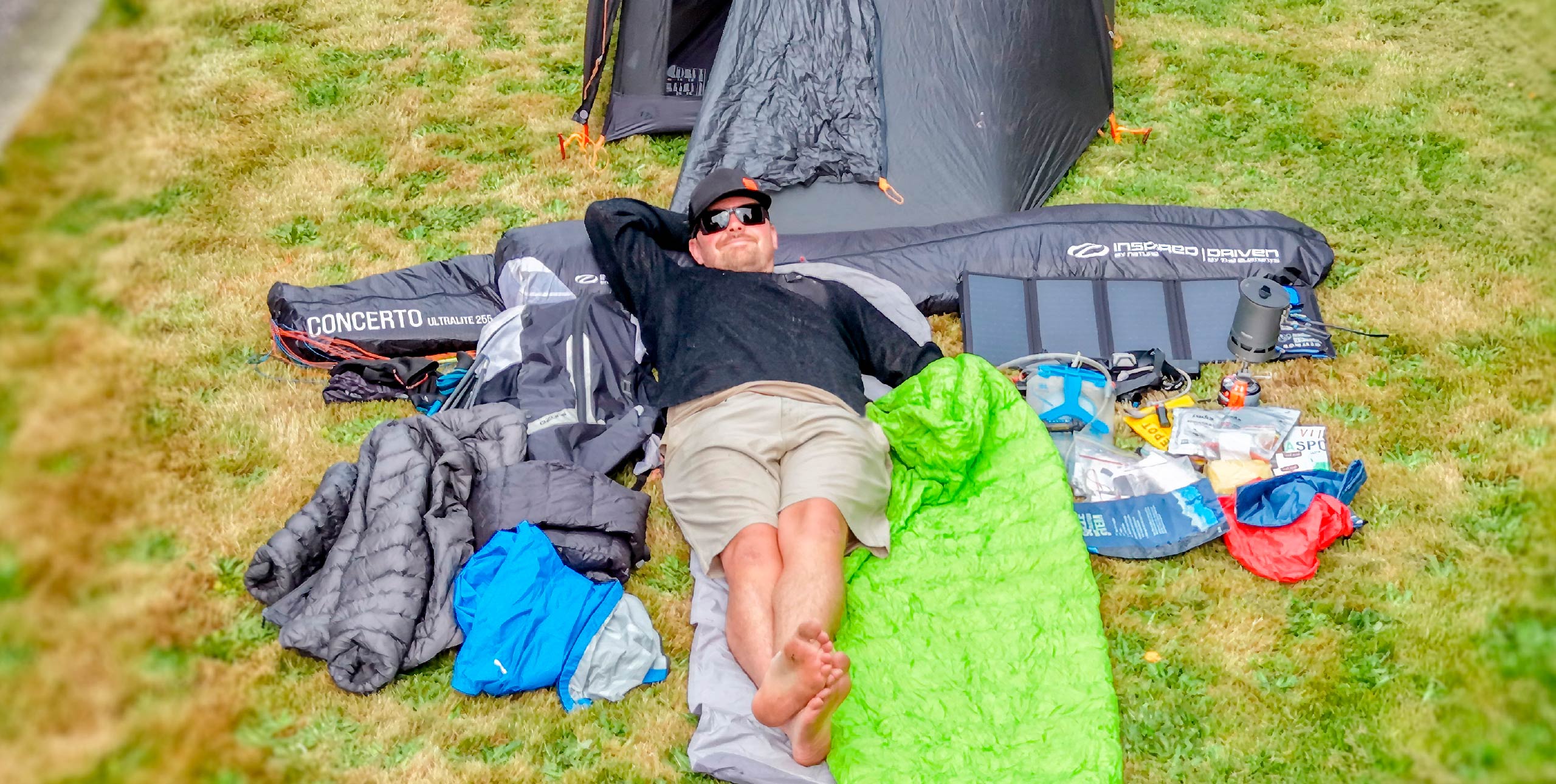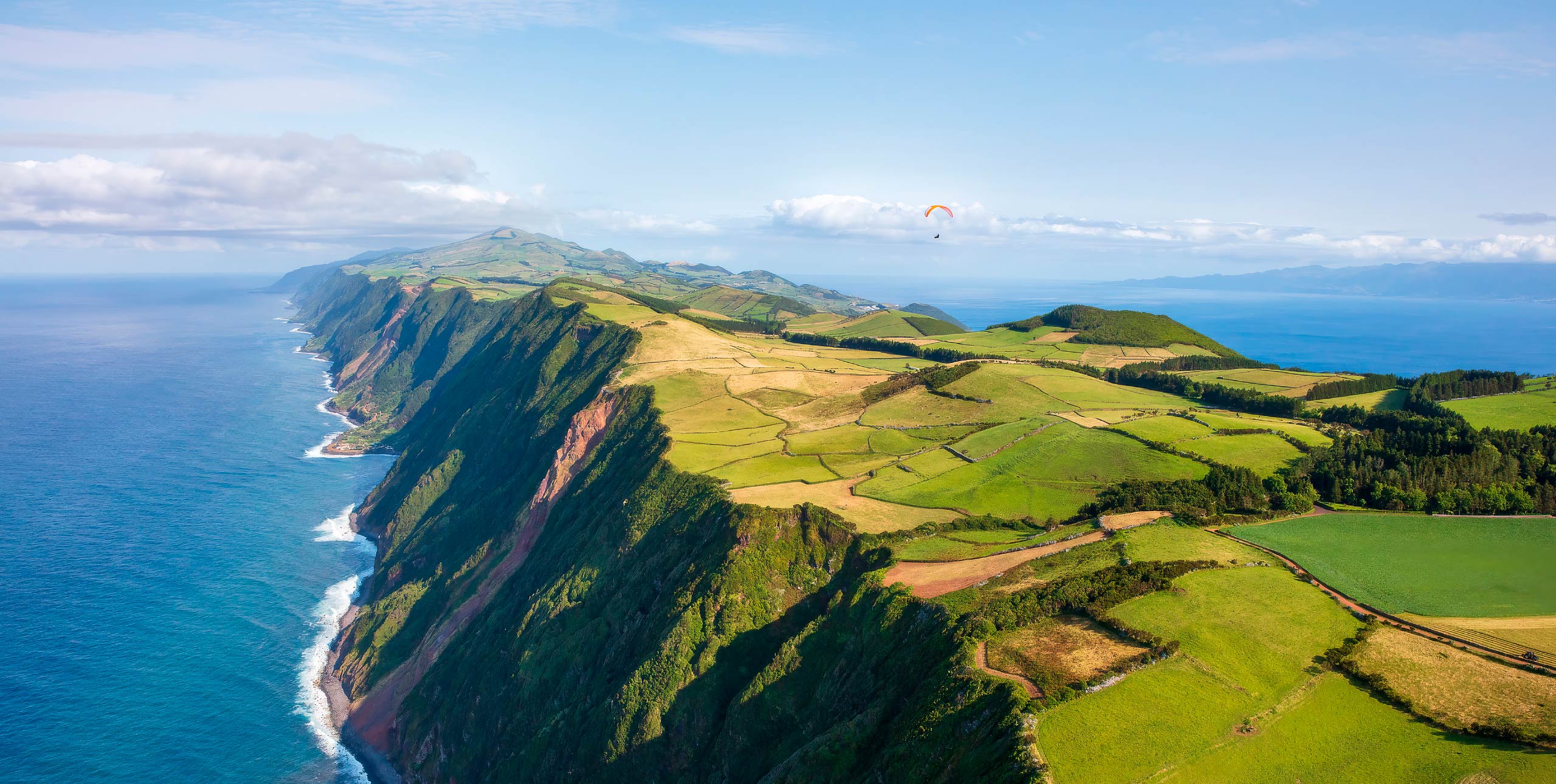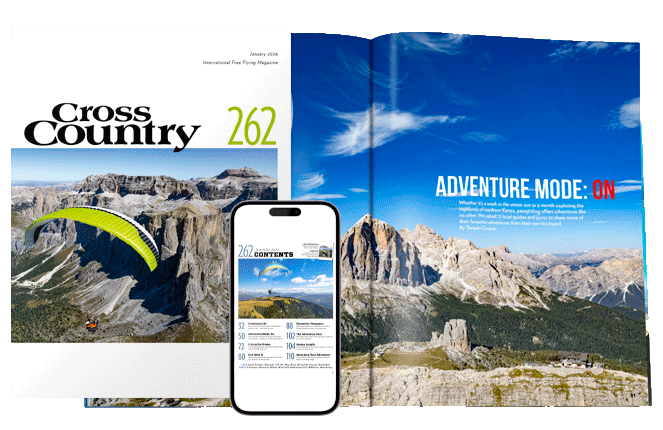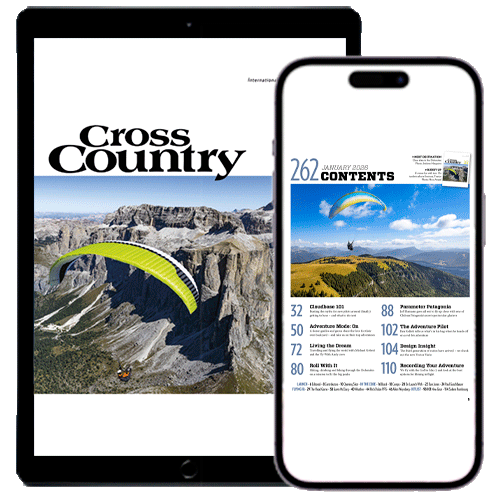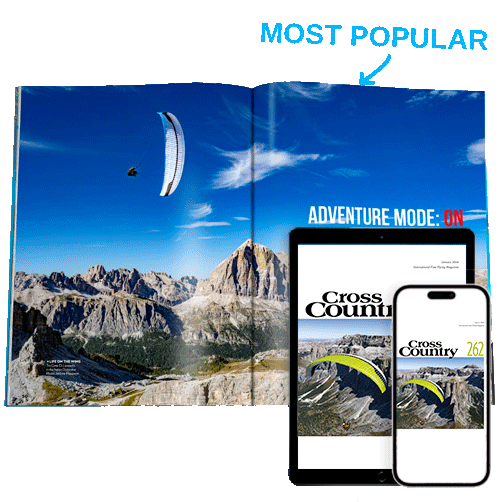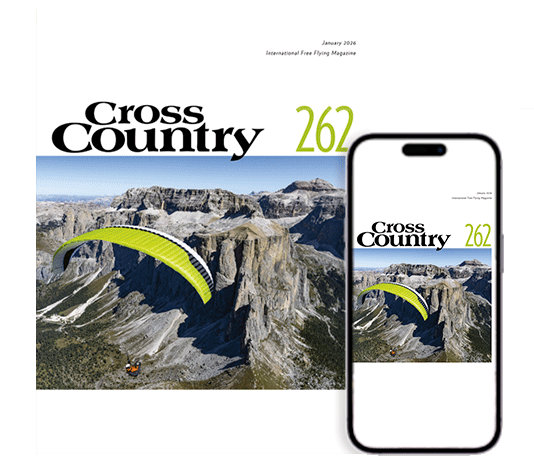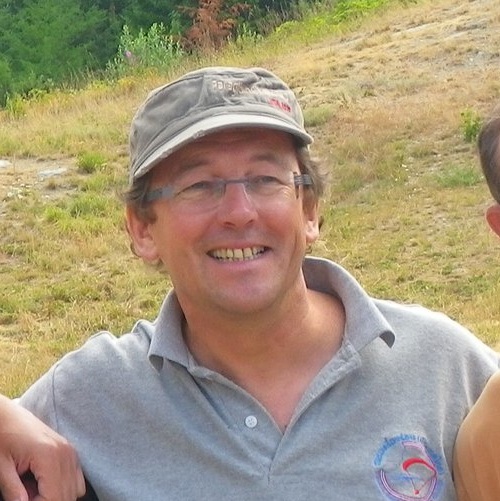
James ‘Kiwi’ Johnson was paragliding with Xavier Murillo on the day he disappeared. He reports from Huaraz on what happened on the day and what has happened since. Photos by Kiwi Johnston

For the sake of background: my name is James “Kiwi” Johnston, reporting from Huaraz, Peru, where PWC technical delegate and long-time Cross-Country magazine contributor Xavier Murillo has disappeared during a routine paraglider XC flight as a part of the Polish-Canadian Peter Chrzanowski’s X-Andes reconnaissance.
I am a former Cross-Country editor-at-large (and a former feature editor for XC’s one-time sister magazine, KiteWorld) and have been on a paragliding exploration of Peru for the past month with Jeff Cristol, an experienced alpinist and paragliding guide from the Telluride, Colorado area whom I have flown with over the past two summers.
Jeff is married to a Peruvian, and has been climbing in Peru for more than two decades; he has also pioneered many of the paragliding sites in Peru over the last decade, and is probably the pilot with the most experience flying in the Huaraz area. Though not officially a part of the X-Andes reconnaissance, Jeff and I were the only two pilots actually flying with Xavier Murillo on the day he disappeared, and thus were the last two people who saw him.
Although I have not written for XC magazine for a number of years, I thought there was good enough potential in this trip to propose an article to XC’s executive editor Bob Drury some months ago; this is how I became involved with the X-Andes 2012 scouting expedition at Bob’s urging.
The map is centred on Caraz, with the Cordillera Blanca (White Range) on the right and the Cordillera Negra (Dark Range) on the left. Huaraz lies 65km south east. The valley between the two ranges offers spectacular paragliding.
I joined Peter’s group 12 days ago, the day before Xavier arrived. Having first met Xavier in the same way that many pilots have met him, running a PWC (in Venezuela in 1996), our casual connection had developed into a promising friendship in the week that we travelled, ate, and flew together here in Peru, purportedly attempting to establish a route for the proposed 2012 X-Andes event. Where what started as merely a comedy of errors, now threatens to become a tragedy.
Here is not the time nor place to analyse Peter Chrzanowski’s ‘Pre-X-Andes’ expedition, nor the role it has played in Xavier’s disappearance. However on the urgings of Bob Drury, I have agreed to relate the events of the day of Xavier’s disappearance; as well as the on-going efforts to locate him.
Xavier disappeared on 1 July 2011, while flying a site we had just discovered two days earlier named Cerro Huandoy, a large brown lump situated almost directly in front of the three massive Huandoy peaks in the Cordillera Blanca.

To our knowledge no-one had ever flown this site previous to our visit there on 28 June; we ended up there by accident, when the local tourism advocate for Caraz told our vehicles drivers to take us up there, even though Peter Chrzanowski (and the rest of us) thought we were going up into the Cordillera Negra range on the opposite side of the valley.

A triangular shaped wedge (when seen from above) that sits in the predominant north valley wind, this previously unknown launch has proven to be an excellent site so far; on this first day the Polish pilot ‘Andy’ Jedrzej flew some 65km to just past Huaraz; while Jeff Cristol and I were rewarded with spectacular views of the steep Parón canyon topped with it’s numerous cloud-covered 6,000m peaks that lie only a mile or so behind launch, as we climbed up to close to 5,000m before completing shorter XC flights of our own. (My vario’s LCD was smashed earlier in the week in the back of one of the pick-up trucks … hence my inability to provide precise altitude figures.) Xavier did not fly this day due to a stomach illness that kept him on the ground for several days.
The following day (29 June) marked the beginning of the annual ‘Festival de Alpinismo’ (Alpine Festival) put on by the town of Huaraz to promote tourism, and Peter Chrzanowski and the X-Andes’ major sponsor. Xavier, Peter Chrzanowski, and ‘Andy’ Jedrzej were presented in a ceremony in the Plaza de Arma’s as “some of the best pilots in the world” before arriving at the nearest launch to Huaraz too late to fly due to the strong winds.
July 1 dawned with the news that we would be returning to Cerro Huandoy, which seems to have the best cross-country potential in the Huaraz valley. After having been grounded for a number of days, Xavier was clearly keen to fly, while I (in contrast) began feeling increasingly ill on the two-hour ride to launch. Upon arriving in the town of Caraz, we were greeted by a barrage of local and national media who proceeded to follow us up the steep hour-long dirt road to the newly discovered launch, and we realized that the Alpinismo Festival people had announced that we were having some kind of a cross-country competition.

Peter Chrzanowski and a couple of tandems launched first, before Jeff Cristol, myself, and Xavier launched sometime between 12 and 12.45pm. Xavier initiated a radio and phone check with Jeff and I before we launched, and the last thing I saw him do on the ground – ever the professional – was give an interview in full-flying gear and harness while sitting on launch for a local TV station. The last thing he said to me was that we should try and fly together to photograph each other against the big peaks, and since he had not been so well, he didn’t seem to have any great ambition to fly a significant distance cross-country, although at the time I believed that all three of us (Jeff, Xavier, and myself) had the basic goal of the city of Huaraz some 65km away in mind.
(To answer some questions raised on the Internet paragliding forums. Xavier was dressed appropriately for flying at altitudes of up to 5,500m. He was flying a white Gin Boomerang, which model I am not sure (3?). He had no oxygen (as Jeff does), nor a SPOT tracker (as Jeff and I both do). Although he had his considerable camera bag strapped to the front of his harness, we do not believe he had bivouac gear or extra food and water.)
Conditions were what I would describe as solid mountain-flying conditions (600-1000 fpm), with a moderate amount of wind that made the edges of the thermals a little rough. Initially Jeff, and then Xavier and myself, all worked the same strong thermal that drifted us towards the Cordillera Blanca until we were almost at cloud-base. I left the thermal at one point for cleaner air to shoot some photos of the mountains that were initially clear of clouds on this day; and when I rejoined the lift, I could not close the gap on Xavier who remained approximately a couple of hundred metres above me, probably topping out at somewhere between 5,000 and 5,500 meters, the highest we had been all week.

Jeff, who had originally been highest at first and then flown off downwind, quickly flew back to the thermal to rejoin us, and was now at approximately the same height as myself. Looking up I saw Xavier leave the thermal and head directly at the massive triple-peaked Nevado Huandoy massif (6,395m) that was only a mile or so away by now, a bold move that made me cheer and try and gain the extra few hundred metres to go with him.
Jeff – who had earlier joked that he wanted to top-land Huandoy – went with him from my height. (The last photo I have of Xavier had the two of them in it with Xavier clearly higher.) Xavier’s white glider soon became impossible to see against the white clouds and white glaciated peaks and I lost sight of him flying towards Huandoy Oeste, its summit shrouded in cloud, while Jeff, who actually saw (and photographed) him last, believes he turned somewhat to the south and was heading around the south-east corner of Huandoy Oeste towards Huascarán, the peak of which was also now lost in a growing cloud.

Jeff then realised that he was too low to follow Xavier, and turned back for the long flight into the wind back to Caraz, Peter Chrzanowski having apparently told him we were all to land in Caraz’s football stadium. (This was later news to me.) I had still been drifting down wind with the thermal and taking photos of the range, still fairly high at this point – I saw Jeff’s yellow glider come back far below me – when I became overcome with a sudden violent bout of airsickness, and began vomiting somewhere close to cloudbase.
After I recovered from this I decided I had had enough for one day and slowly flew out to the town of Yungay, where I knew there was a safe landing field in the increasing valley winds, landing a little before 2.30pm. Although I was photographing the range south of Huandoy towards Huascarán and looking for Xavier gliding down the range, I never saw him during this part of the flight or upon landing … nor did the dozens of children on the LZ who I had looking for other gliders after I landed.
THE AFTERMATH, 2-5 JULY
We have mostly been utilising the endless stream of collectivo taxis that ply the road between Caraz and Huaraz for self-retrieval; so was the case on this day and I was back in Huaraz within a couple of hours, notifying Peter Chrzanowkski and Jeff Cristol that I was all right by phone. Calling Xavier’s cell-phone upon dark, it seemed to be turned off, so I walked over to Xavier’s hotel which is a block from mine to discover he had not yet shown up. At dinner with Jeff and some of the other X-Andes pilots that night, there was the expectation that the conditions of the day were good enough that Xavier could have flown over 100km+ and thus might still be making his way out from where he had landed and back to Huaraz. He had been having problems charging the battery for his phone, which could explain why it was seemingly off, while no one doubted that he had the experience to make such a flight. Surely we would see him the next morning was the general consensus.
However I woke around 4.30am on 2 July with a general concern for his safety, and could not get back to sleep, and then went to Xavier’s hotel around 8am to find that he had still not returned. Jeff Cristol turned up a few minutes later, and since we could not raise Peter Chrzanowkski by phone – Peter is obviously running his whole operation on a Peruvian shoe-string budget and his phone goes on-and-off as often as a big city traffic-light – we decided to take matters into our own hands and reported Xavier missing to the local Casa de Guia.
After being told that the local police in nearby Yungay were responsible for search-and-rescues, we decided to go by the Huaraz Tourism official’s office to get help contacting them, when we ran into Peter Chrzanowski. The rest of the day was spent at the Huascarán National Park office (one of the X-Andes sponsors), and then with Beto, a very experienced local climbing/trekking guiding company (Montrek’s) owner and occasional paraglider pilot (who had been acting as the X-Andes unofficial guide), as he called all the various agencies.
We believe that the Yungay police dispatched a search party up the Llanganuco valley (between Huandoy and Huascarán) looking for Xavier, though I suspect they only asked the officials stationed at the park entrance in the Llanganuco. There is a well-travelled tourist road that goes up this valley, and well as various climbers’ refuges etc, so if Xavier had landed somewhere up here (below the snow line) one would expect he would be easily spotted.
JULY 3
The weather has closed in the previous night, the temperature dropping with light rain in town and it has clearly snowed in the Cordillera Blanca during the night. The reality that Xavier has still not turned up begins to sink in, and our efforts at mobilizing a search intensify. Without notifying the rest of us – though apparently at Peter Chrzanowski’s request – ‘Andy’ Jedrzej has posted Xavier’s disappearance on Paraglidingforum.com, a move that sees Peter Chrzanowski start to field calls from various concerned parties, including XC magazine, the PWC, and the French Embassy.
Urging Peter Chrzanowski to utilize his considerable skills with the Peruvian media, descriptions of Xavier and his disappearance appear on local and national television and radio. The only helicopter apparently available in Peru is in Cusco, and for whatever reason there does not appear to be enough funds to get it to fly up here.
Once it is established that Xavier has some form of rescue-insurance, a small plane is organized from Lima for the following day. We are told the plane will be in Huaraz at 6.30am in the morning and to expect a call to head to the airport. Blowing up the high-resolution photos I took of the range during the flight from Cerro Huandoy on my computer, Jeff, Peter, and I search for an unseen glimpse of Xavier and his white wing amongst the clouds or glaciated snowfields in hope of giving the airplane pilot some directions the following day, but we find none.
I find it increasingly difficult to believe that Xavier managed to fly past Huascarán without me noticing – so where the hell did he go? If he had been forced up the heavily travelled Llanganuco valley, surely he would have been spotted, while the idea he had landed on the snow fields or been sucked up into the clouds seems equally unlikely. After scanning the photographs of the day, the sense of mystery only deepens, my fears worsening …
4 JULY
Another cold night and still no sign of Xavier. No 6am call from Peter Chrzanowski either, nor can we get in touch with him. Reality is beginning to hit with both barrels now – the 45th country of Xavier’s paragliding career may possibly have been his last.
Desperate to do something, Jeff and I take a collectivo to the Yungay Police Station where we have been told the search-and-rescue unit is based out of, only when we find the Yungay Police Station, they inform us that the true Search-and-Rescue unit is based out of Caraz. Back into yet another collectivo, and when we get to Caraz, there is a police truck waiting for us.
Dressed in some kind of a red euro-polypro Police uniform, these guys are clearly the real Search-and-Rescue team, and we are going over the maps, our photos, and Jeff’s GPS log with them when Jeff’s phone rings; it’s Peter telling us that the plane will turn up in Huaraz within an hour-and-a-half. Back into the collectivo and back to the airport near Huaraz, where no explanation was given why the plane was more than six hours late.
(The first news report on XCmag.com about Xavier’s disappearance reported: “The plane was cancelled [in the morning] because of bad politics.” According to Peter ‘Organizing air search and rescue is notoriously difficult in Peru and, with helicopter companies quoting two to three days to organize a chopper, he opted to rent a private plane to search for Xavier.’
“All other [rescue] outfits told us [they need notice of] two or three days for a helicopter, so we went to a faster aircraft company instead,” Peter said.
However, the plane company is not certified for air search and rescue, so the insurance company involved has refused to guarantee payment. As a result, the aircraft did not take off. Peter thinks, “other rescue outfits in Peru” have been “lobbying” to be used instead of pulling together to rescue Xavier.)
Stefan Zumsteg, a Swiss pilot living at Lima, arrived with the airplane, and a team of people (including Jeff Cristol and Peter Chrzanowski) participated in the fruitless air search, which was hampered by low cloud over the mountains. I finally remember I am supposed to be an XC correspondent and contact my editors.
5 JULY
Mike Christiansen, an American pilot living in Chile who is a close friend of Xavier’s, has apparently been appointed by the PWC to coordinate the search, and is supposed to turn up this morning with the plane. He and Jeff Cristol know each other and are in contact by phone and email.
The morning is cloudless, with the view of the mountains as clear as they have ever been, but no plane arrives, although I was told it flew around the valley without landing. [Editor’s note: The Paragliding World Cup Association reported that the plane searched for two hours on 5 July with no sign of Xavier.] Virtually all the pilots who participated in the XC Andes recon have now left, apart from organizer Peter Chrzanowski, and myself and Jeff Cristol.
Although we have been flying in an area with gnarly 6,000m peaks and narrow windy valleys, the area here is criss-crossed with roads and campesino settlements, even well into the Huascarán National Park, while climbers and trekkers regularly traverse the valleys and up and down the peaks. The idea that Xavier could have simply disappeared seems inconceivable in an area with so many watching eyes, but this is exactly what seems to have happened, raising the possibility that he had some kind of a medical emergency (perhaps due to the altitude) and crashed high on the heavily crevassed snowfields, or that he encountered some kind of foul play upon landing, although neither of these possibilities seem particularly likely.
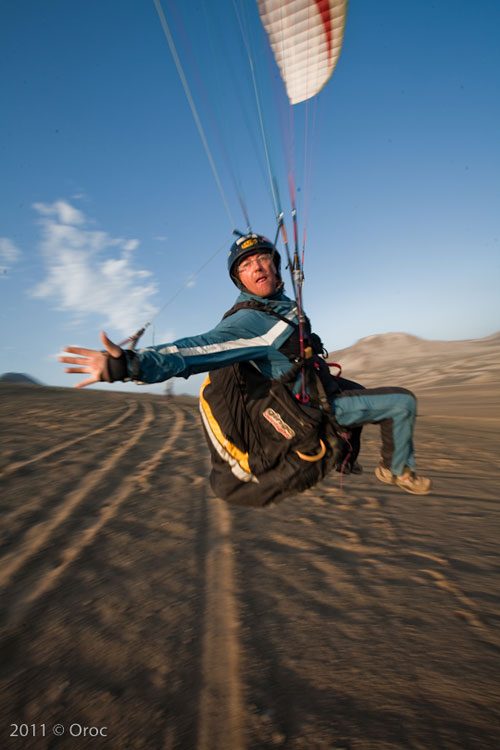
There has been some contention on the various paragliding forums that Xavier was affected by severe weather caused by the big mountains of the Cordillera Blanca range itself; however Jeff and I don’t think this is true for this day; Xavier wasn’t that far away from us when he started heading down the range, there was no evidence of the clouds moving, or any other signs that the wind and weather was that different a little over a mile away in the Blanca. Xavier’s disappearance becomes increasingly mysterious with each passing night. We can only hope that he has flown far further than we expect, and is returning with one hell of a story.
James “Kiwi” Johnston, 5 July 2011
• Coordinates of Caraz landing, Peru: Latitude: -9.05766 Longitude: -77.76581
• Do you know any more? Post below
• DONATE to the search and rescue effort
• Xavier is Missing Facebook group
• Xavier is Missing Paraglidingforum.com thread
• Got news? Send it to us at news@xccontent.local


